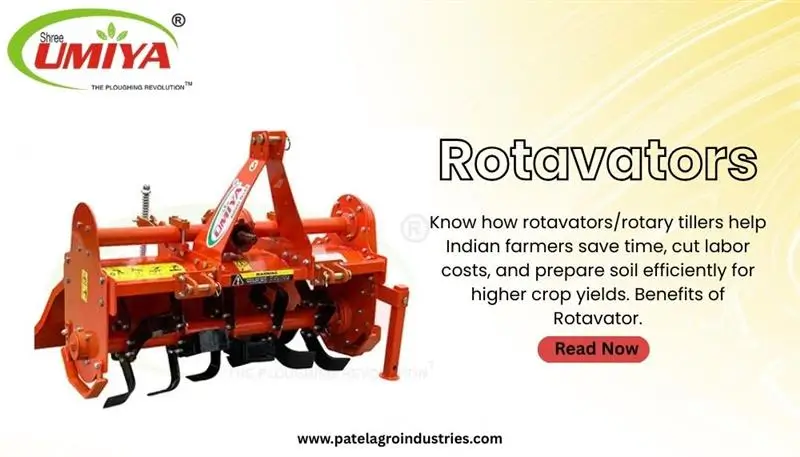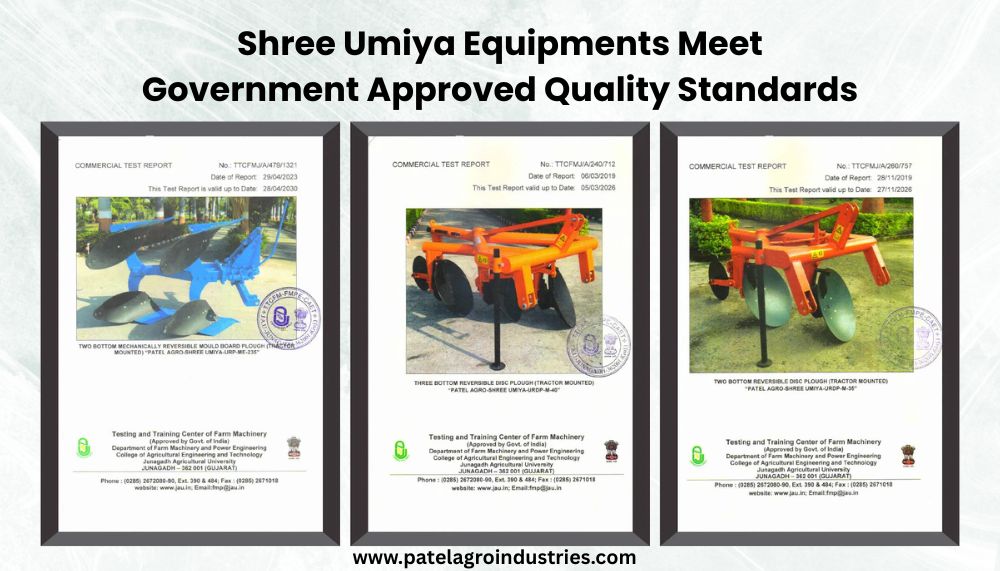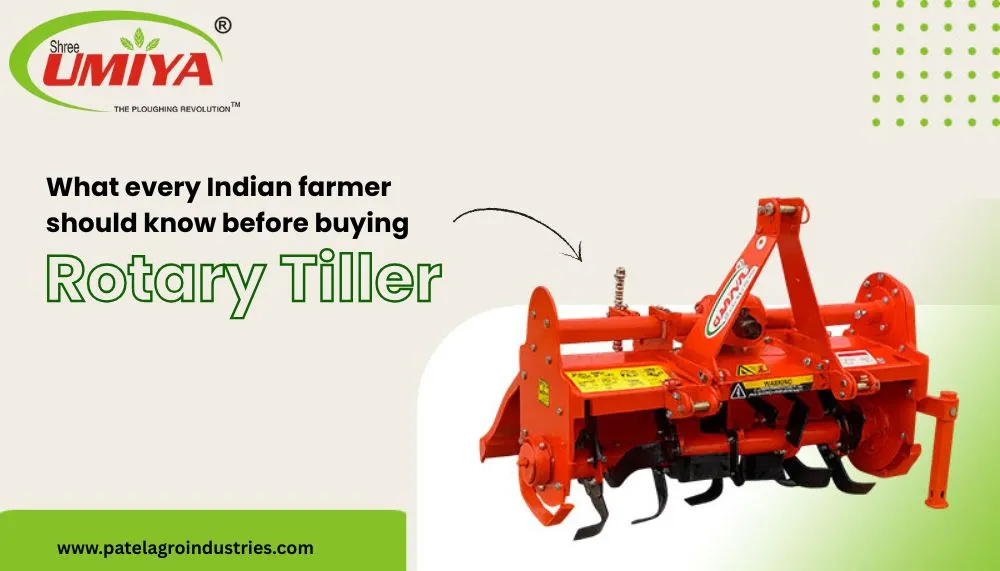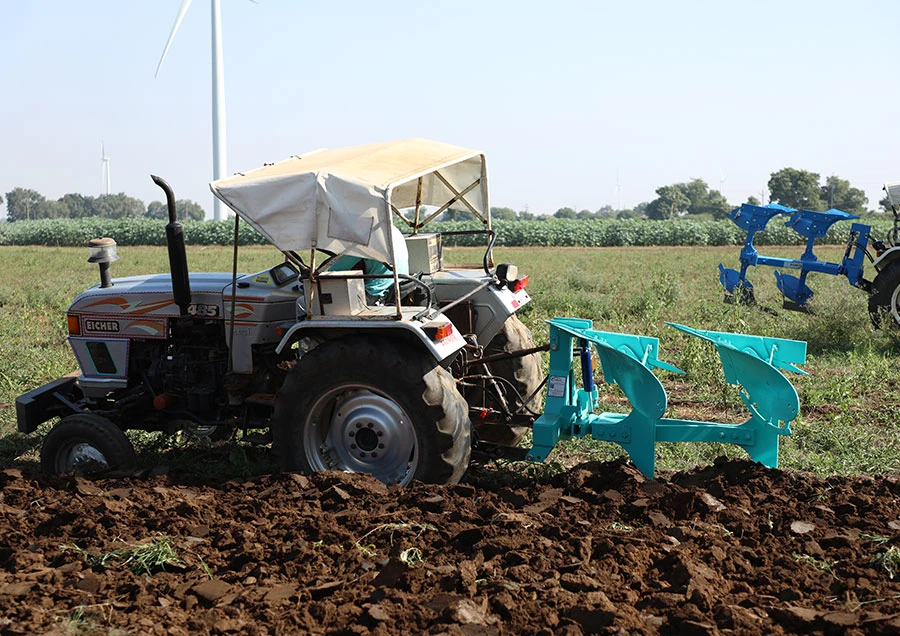Chat With Us
+91 99253 37969How Rotavators Help Increase Yield & Save Time in Indian Agriculture?

Farming was a Labor-intensive job in India. Traditionally, soil preparation involved a lot of manual work. Farmers had to use bullocks or manual harrows that took time and money.
This is where rotavators are a viable tool for farmers to consider for land preparation. A rotavator is an implement that attaches to a tractor to prepare soil efficiently and on time. Let’s take a closer look at the situation and understand how rotavators assist Indian farmers in lowering the amount of time in seedbed preparation.
5 Reasons Why You Should Buy A Rotavator For Higher Crop Yield
Using modern farm implements like a Rotavator, which is also known as a Rotary Tiller, can be beneficial. Farmers can 2X the overall crop yield in comparison to a manual and intense labour procedure. But why should one choose a Rotavator? Here are the 5 most impactful reasons:
1. Fast and Simplified Preparation of Land
Multiple rounds of ploughing, harrowing, and finally leveling were required to prepare a single field. This took days to complete and a lot of effort. Now, a single machine known as a rotavator does all of these processes automatically. Its rotating blades slice, crush, mix, and level the soil all in one go.
Farmers’ Advantage:
- Farmers are able to save 50 to 60% of the time spent preparing the field.
- They are also able to sow seeds on time, increasing the chances of a good yield.
- Farmers are able to take complete advantage of the offseason by planting crops on time with the aid of the downloaded time for field preparation.
2. Savings on Fuel and Labor
In recent years, the increased cost of diesel has become a greater problem, as fewer manual laborers are available. Hiring seasonal laborers to come aid with ploughing and leveling the land comes at a hefty price for farmers. Farmers can utilize rotavators to reduce the amount of manual field work required.
Farmers’ Advantage:
- Farmers are able to save 30 to 40% on fuel.
- Farmers are also able to save on labor-intensive work that is labor-dependent, especially in the peak season.
- Ultimately, the overall cost of cultivation and yield is increasing.
3. Perfectly Works on a Variety of Soils
Rotavators are made to work with all different soil types. The sharp blades of the rotavators can break hard, dry soil and turn it into fine tilth that is dry and loamy, making it optimal for sowing. For sandy and light soils, the machine evenly mixes in neglected organic matter to increase soil fertility.
Benefit for farmers:
- Saves the need to purchase different implements for different lands.
- Works effectively in varying soil conditions.
4. Cross Farming Made Simplified
A common challenge amongst farmers is preparing the land immediately after the harvesting season in order to avoid delays in sowing the next crop.
Rotavators support sowing these crops as well. They can easily incorporate the residue paddy straw, sugarcane trash, and even cotton stalks post-harvesting to mix with the soil to enhance soil fertility.
Benefit for farmers:
- Helps in achieving faster crop turnarounds.
- Improved soil fertility because residues are integrated into the soil.
- Inevitably leads to increased annual income due to growing multiple crops each year.
5. Enhancing Soil Fertility
Continuous farming is often perceived as a threat to soil fertility, but resolving this issue is as simple as blending organic matter into the soil. Leaving the soil overly dry results in the formation of large aggregates, which is counterproductive to preserving organic matter. Soil lumps can be broken up into finer aggregates and mixed with leftover crops to increase soil aeration and moisture retention.
The beneficial impacts for farmers are:
- Aeration leads to vigorous root development and increases root resilience.
- Improved water absorption results in reduced water being used.
- Soil fertility is sustained over the long term, leading to healthy crops year after year.
Also read: The Ultimate Guide to Selecting the Right Rotavator for Your Farm
Rotavator vs Manual Preparation
| Factor | Rotavator | Manual Preparation |
| Time Required | 1–2 hours per acre | 1–2 days per acre |
| Labor Effort | Minimal (machine-operated) | High (manual tools, multiple workers) |
| Soil Uniformity | Consistent, even tilling depth | Uneven due to human variation |
| Fuel/Energy Use | Diesel or tractor power | Human energy only |
| Cost per Acre | Moderate (fuel + operator) | Low direct cost, high labor cost |
| Durability of Result | Lasts longer, better root penetration | Short-term, may need rework |
| Best For | Large farms, quick turnaround | Small plots, low-budget prep. |
Patel Agro Industries Rotavators – Trusted by Farmers
Patel Agro Industries has designed its rotavators with Indian farming conditions taken into account:
- Robust Boron Blades: Rotavators use high-quality boron blades that are made to handle hard soils.
- Fuel Efficiency: The rotary motion reduces the number of passes on the tractor, thereby saving on diesel.
- Versatility: Rotary Tiller works on all types of soils and is available in different models for mini tractors starting from 15 HP to 22 HP and above.
- Lasting Durability: Components are provided with a durable frame and rotavator parts that will last for years.
- Farmer-Friendly Prices: Ensures value for money without compromising on quality.
- Bonus: Patel Agro Industries provides a 1 Year manufacturing warranty on its rotavators.





